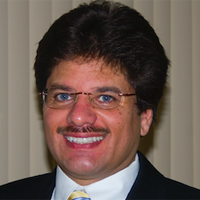
Cloud Workflow Shifts Expand As Concerns Linger

Major broadcasters are already using public cloud platforms to support key operations today, and the shift of many more workflows from on-premise hardware to cloud technology is likely inevitable, according to top technologists speaking at TVNewsCheck’s virtual TV2025 conference last week. But doing so requires new thinking from broadcasters about the way they invest in technology infrastructure, as well as the meticulous design of systems and networks to ensure the “nine 9s” reliability that the television industry demands.
Embracing the cloud means paying for a service over time, instead of a one-time capital investment, which may require reeducating finance departments as to how they handle their accounting. And it also means overhauling existing workflows and processes to take full advantage of the potential cost savings and flexibility offered by the cloud, a point made by several executives speaking in the panel session A C-Suiter’s Guide to Capitalizing in the Cloud, moderated by this reporter.
Playout, disaster recovery (DR), content sharing and archiving are areas where the public cloud has already made significant inroads, while live production workflows are still a work in progress. WarnerMedia runs DR channels for all of the HBO and Cinemax channels out of the Amazon Web Services (AWS) public cloud, while Sinclair Broadcast Group plays out its diginets from AWS and is also moving archiving for its various properties to the cloud. Viacom CBS is migrating linear playout for all of its networks, including the CBS broadcast network, to the cloud, while the CBS Owned Stations are experimenting with the cloud for archiving as well as production of OTT content.
Hearst’s Expanding Use
For the past eight years, Hearst Television has been using cloud-based systems from tech vendor Bitcentral to support asset management and content sharing among its stations, with a mix of proxy video in the cloud and hi-res files stored locally in what it calls a “distributed cloud.” The station group also does file-based archiving of news content in the cloud, again working with Bitcentral software. And the group is looking to do more, including the potential move of DR operations hosted in a private data center to one or more public cloud services. Hearst’s digital team is also going through its extensive tape archives and digitizing key content to the cloud archive.

Joe Addalia
“When we crafted this originally, we had the foresight to build this as a service,” said Joe Addalia, director of technology projects for Hearst Television. “So, it’s archive as a service, essentially. That’s the key takeaway. We’re talking cloud, but really where the world is headed is to a service. That’s something we’ve been early on with archive, and we’ll see more coming into the future.”
Real Estate-Catalyzed Adoption For WarnerMedia And Sinclair
Real estate moves due to ownership changes have spurred cloud adoption. When WarnerMedia moved playout of its HBO and Cinemax channels from Hauppauge, N.Y. to Atlanta as it looked to consolidate master control operations at its Techwood campus, it turned to the AWS cloud for backup, running redundant streams it can instantly switch to in case of failure. (Interestingly, WarnerMedia subsequently sold the Hauppauge facility to ViacomCBS, which is now building its new Cloud Control Center there.)
Now that the company has sold the CNN Center in Atlanta as it looks to further consolidate operations in Techwood, Warner Media wants to move more functions into the cloud including news and sports production workflows. Doing so will cut down on space, HVAC and power requirements while replicating the functionality the company has historically enjoyed by using the Techwood and CNN Center facilities to back each other up.
WarnerMedia is currently in a number of POCs around cloud playout for the CNN news and Turner sports networks. The first step in the move out of CNN Center, which is due to be vacated by June 2024, will be to move DR functions for those networks to AWS.

Bob Hesskamp
“We’ll look at the same thing we’ve done with HBO and move all of our channel DRs to the cloud,” said Bob Hesskamp, EVP of engineering, WarnerMedia, said. “Of course, we’ll have some complexities around news and sports when we do that, and those systems are in POC. As we also look at how we cannot just save space and power but enable our team to work anywhere and have access to our video, we’re looking at cloud-based edit and postproduction for news and sports, and also moving our archive for news and sports to the cloud.”
Sinclair’s acquisition of the former Fox regional sports networks (RSNs) as part of the broader Disney/Fox deal meant relocating playout of those networks, now rebranded as the Bally Sports Regional Networks, from their former home at The Woodlands, Texas, (now owned by Disney) to a new master control center built at Encompass in Atlanta. Disaster recovery for those RSNs is now in the cloud, as well as an archive of 8 to 9 petabytes, said Mike Kralec, VP, technical operations and deputy CTO for Sinclair Broadcast Group.

Mike Kralec
“So, a big move there, but part of a strategy to take all of our archives to cloud over time,” Kralec said. “Some of the stations are still on their LTO [linear tape optical] libraries, but they’ll get phased out. They’ll get moved to the cloud. The key for us is capturing the right metadata in the process of getting things to the cloud, to make sure the archives are searchable, and you can retrieve the content quickly. We want to make it intuitive. I think it’s important that as we transfer to cloud, we’re not just transferring to cloud. We’re transforming how media management is done at Sinclair — that we’re improving the process, not just changing the technology used.”
CBS’s Cloud Forays
CBS’s stations also see value in archiving in the cloud, said Jeff Birch, VP of engineering for the CBS Owned Stations, and have a couple POCs underway based on a central content repository with transcoders in the cloud.
“It doesn’t make a difference whose edit system I have at the station, but everybody can see what’s in that bucket, reach in, use it and move it around at will,” Birch said.

Jeff Birch
In addition, KOVR Sacramento, Calif., and WJZ Baltimore are using the cloud to do live production to air for the CBSN streaming product in those two markets. CBS already “broke the cloud already,” Birch said, as the cloud had problems in handling an on-screen ticker that scrapes live data from a variety of sources. CBS tried to “back-door” the issue by sending the output of the cloud back to the station, inserting the ticker there, and then sending that back to the cloud for distribution to CDNs [content delivery networks]. But that also caused problems for the live production workflow, which Birch described as a work in progress.
“The holy grail is full edit in the cloud and full production in the cloud,” Birch said. “We’re not there yet, we’ve got a ways to go. I think everyone’s in agreement that latency is still an issue, and just the physical process of getting hi-res content back and forth in real time is a challenge, and it’s not there yet. But we expect it will get there.”
COVID Acceleration
The COVID-19 pandemic has certainly helped accelerate cloud usage through a big shift to remote production workflows. That is due both to new cloud-based editing and graphics tools as well as the more prevalent virtual desktop infrastructure (VDI) software that allowed production personnel working from home to remotely access their workstations back at the station or broadcast center.
Bitcentral saw usage of its Oasis content sharing system from its big news customers like Hearst double, and almost triple in some cases, over the last year due to the demands of COVID-19.

Sam Peterson
“Fortunately, it was something that our customers were already used to doing, just not to the level that they did,” said Sam Peterson, GM of the core business unit for Bitcentral.
Security became more of a concern for customers, as connections were in many cases no longer coming from the station but from staffers’ homes. So Bitcentral has reviewed existing installations with customers to make sure the systems were “architected correctly,” he said.
A big focus for Bitcentral today, Peterson said, is ensuring the same experience for customers regardless of whether their application is running on-premise or in the cloud.
“What are we doing from a user interface perspective on the backend is to make it seamless, between what’s being used on-prem and what’s being used in the cloud,” Peterson said. “We’ve been really focused, as have other vendors in the space, to have real parity and have the operational usage be the same.”
From the start of the pandemic, CNN staffers successfully used VDI software to remotely access editing and graphics systems at the network’s facilities. In theory, they could run those same applications as an instance in the public cloud, Hesskamp said.
“As far as it goes, virtualization, VDI, is really the first step in moving systems to the cloud,” he said. “We’ve proved that we can work in these situations. Moving the feeds and making them work in the cloud, it’s the next step. The learning we took from leveraging these virtualized systems for work-from-home during COVID will really help us in transitioning these systems to the cloud.”
Last Mile Concerns
The reliability of the cloud, particularly the “last mile,” remains a concern for veteran broadcasters like Birch who have seen their fair share of “backhoe fade” and satellite outages. He and other panelists emphasized that careful network design, including the potential use of multiple cloud vendors, was essential in avoiding the type of connectivity problems that could take a station or network off-air.
“You’ve really got to engineer your paths from Point A to Point B with a lot more thoroughness and detail,” Birch said. “You can’t just rely on the vendor saying, ‘Oh, don’t worry, you’ve got diversity,’ when you find out the two diverse paths come together in the same conduit over a bridge somewhere. And it’s happened. And I think we’ve all been through that. You need to have multivendor relationships, and perhaps even multi-cloud relationships, to protect the assets’ integrity.”
To watch the video of this session, click here.
For more TV2025 2021 stories, click here.
































Comments (0)